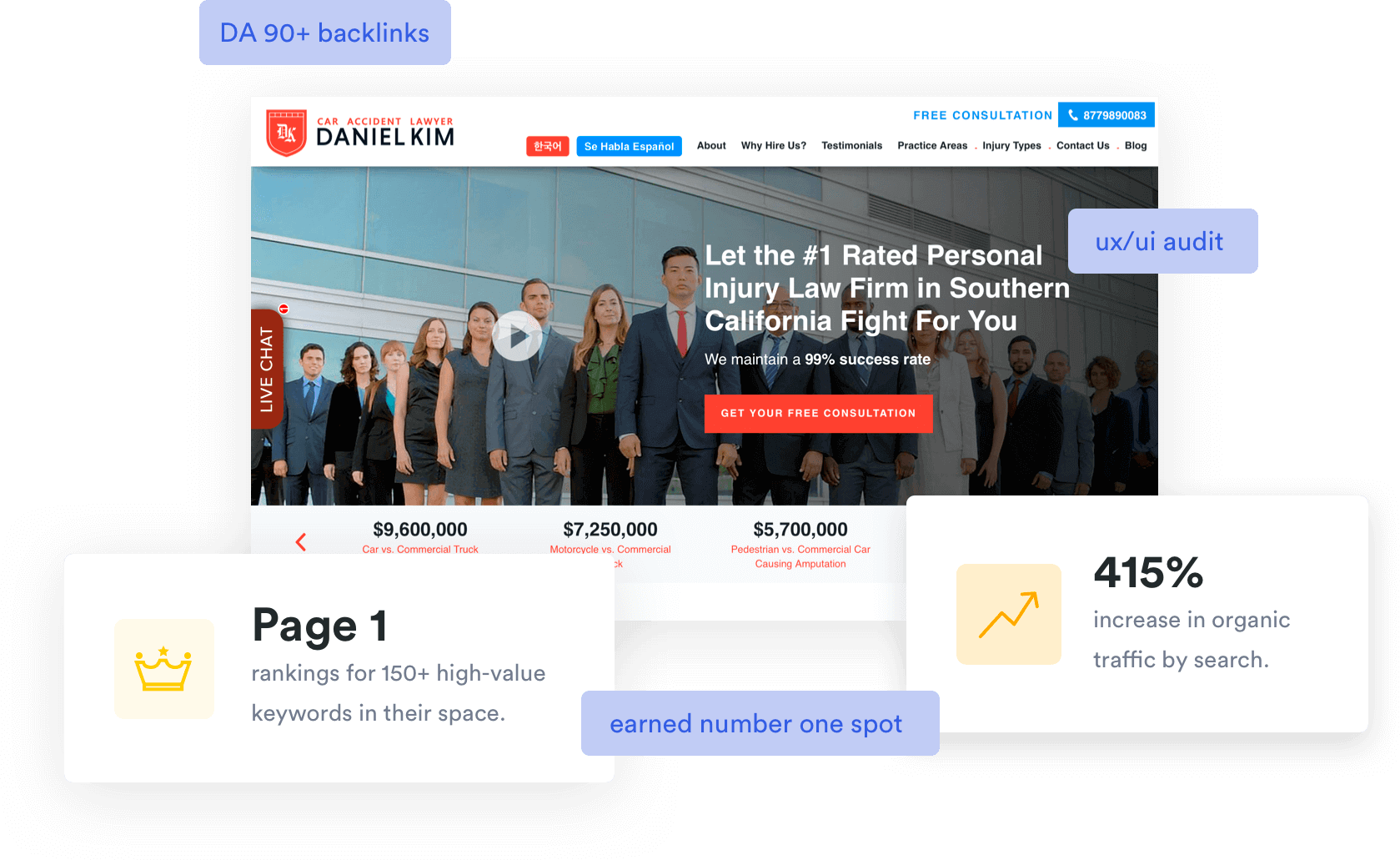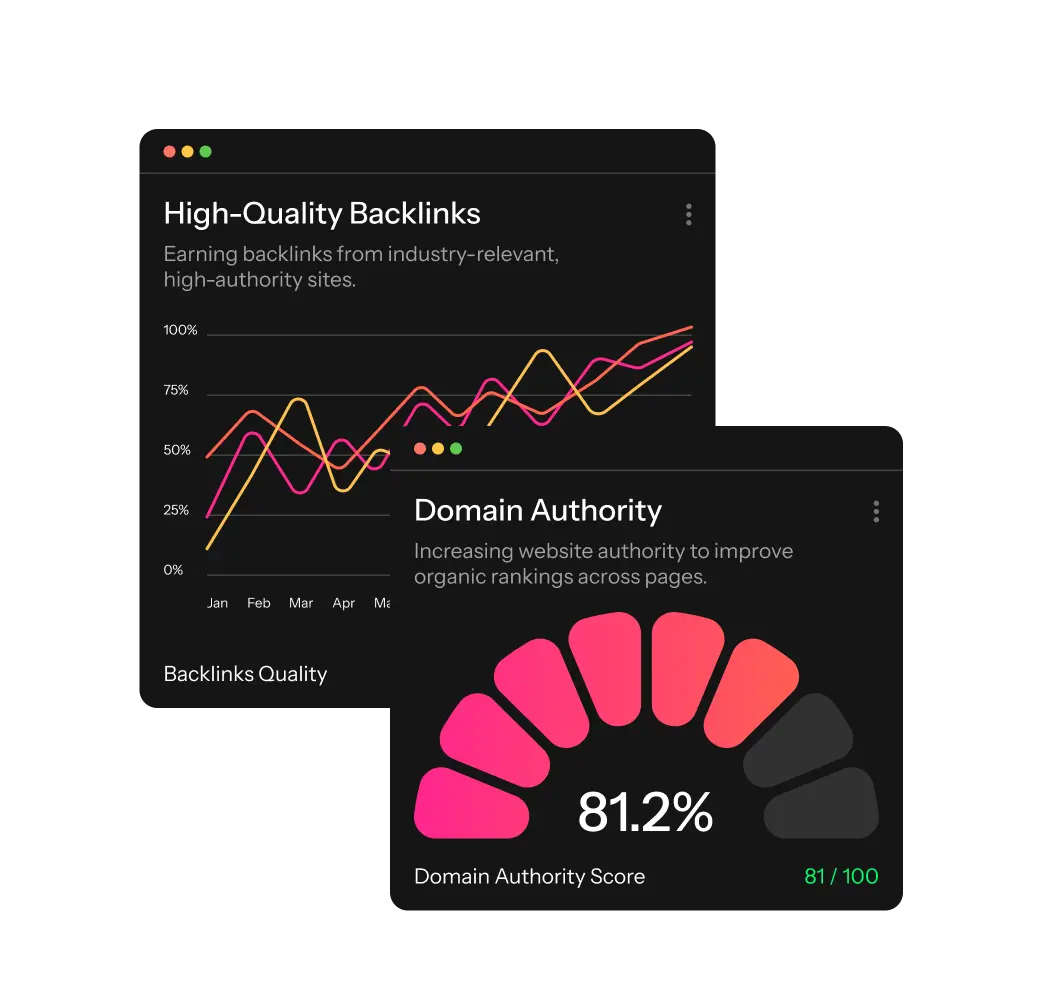How LinkGraph catalyzed SERP rankings in a competitive law industry

The Problem
Personal injury law is a very competitive space for both organic rankings and paid search ads. With personal injury firms willing to pay anywhere from $50-$500 per-click, and with over 46% of clicks going to the top three paid ads, driving traffic from organic rankings can be extremely difficult in saturated local markets like Orange County.
Due to the high price of competitive ad auctions in the personal injury space, paid media was not an economical option. Before the Law Offices of Daniel Kim teamed up with LinkGraph, their lack of online visibility also hindered them from earning any qualified traffic through local search. The Law Offices of Daniel Kim needed to boost their local SEO efforts if they wanted to see any improvements to their website traffic.
LinkGraph knew that focusing on local citations and geo-targeted link building would improve their visibility and help them rank higher than competitors in Southern California-based searches. LinkGraph also recognized limitations with the Law Offices of Daniel Kim’s website design, and knew that a more conversion-focused UI/UX could mean drastic improvements in sitewide conversions.
The LinkGraph Solution
High-Authority & Geo-targeted Link Building

Content Strategy & On-Page Optimization

Local Citations

UI/UX Optimizations

Technical SEO for Sitewide Translation

The Results
LinkGraph’s aggressive link acquisition earned high quality, geographic backlinks from industry-specific publications in the legal and personal injury space. This elevated the site’s domain authority in just a few short months, accelerating the relatively new site’s overall visibility in search results. LinkGraph’s extensive local optimizations also helped boost the site’s rankings for hundreds of high-value location-based keywords, allowing the Law Offices of Daniel Kim to surpass major local competitors in location-based queries.
Since implementing the sitewide UI/UX improvements and technical SEO optimizations, the Law Offices of Daniel Kim has experienced a 105% increase in conversions sitewide. LinkGraph’s improvements continue to drive new leads and consultations for the law firm months after their link building campaign. LinkGraph continues to provide ongoing consultancy and advisory for the Law Offices of Daniel Kim as they expand their brick-and-mortar offices as well as their overall online presence.
Why the most ambitious brands love LinkGraph





